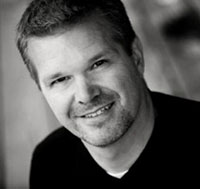8 shifts in world mission
In March, a unique group of leaders met together in North Thailand. In the mix were 20 North American church planters and mission leaders, along with 20 church planters from the growing K*mu Mission Conference. We gathered at MB Mission’s Changed Life Center for a DNA exchange summit, hoping to learn from each other and discover what God was teaching us about faith, hope, and love.
One of the most compelling stories was that of the K*mu conference. Over the last 15 years, the conference has grown from several hundred believers to more than 40,000! The MB Mission team leader for the region is PK, who serves an apostolic role by providing encouragement, counselling, and mentoring to others. It’s not unusual to hear PK tell of whole clans and villages responding to the gospel.
An MB Mission team is supporting PK with leadership training, discipleship, and resources. We continue to ask what we can learn from our K*mu and Thai brothers and sisters and their mission story.
As our DNA exchange summit convened in North Thailand, I thought back to another – and somewhat different – missionary story of pioneer Frank Wiens, who sailed for East Asia in 1912, settling in a city in Ch*na. Frank planted churches and began a pastor training school, clinic, and numerous other community development projects.
While most of the buildings and institutions Frank established haven’t survived the challenges of the past 60 years, the disciples he invested in and principles he lived out not only survived – they thrived.
Although today’s mission focus remains the same – to make disciples of all nations – pioneer cross-cultural ministry looks different today than it did 100 years ago. The following are eight key shifts in the way MB Mission does its work around the globe.
1. From addition to multiplication.
While some of our work still involves Western Christians living in least-reached communities and planting churches one disciple at a time, we’re increasingly focused on discipling indigenous missional leaders who in turn disciple others (2 Timothy 2:2) within larger church planting movements.
For these movements, discipleship through multiplication is the key to church planting. For example, MB Mission trained 1,237 leaders in 2012 through ministries like our Changed Life Center in Thailand.
Multiplying healthy disciples and missional leaders is the central aspect of our work, as we embrace the vision God has given us of “holistic church planting that transforms communities among the least reached.”
2. From being in charge to developing equal partnerships.
During a recent visit to Ind*a, my team and I had the privilege of serving at a number of pastor-focused Bible conferences. We explored the themes of faith, hope, and love and their practical expression in our lives.
During our discussion about love in the way of Jesus, we washed each other’s feet according to John 13. It was a profound moment. A number of pastors commented it was the first time they had experienced foot washing. This simple act symbolized our common humanity, and recalled Christ’s model of servant leadership.
When we consider Jesus’ example, we realize power is best expressed as sacrificial love. When sacrificial love is the foundation of our partnerships, we’ll use our power to serve rather
than control.
Mennonite Brethren have a unique opportunity to express this kind of love thanks to the International Community of Mennonite Brethren (ICOMB), which provides a context for equal partnerships among MB churches around the world, including new opportunities to serve together in mission.
3. From ownership to “we own nothing and count nothing as ours.”
This open-handed approach to vision, projects, and people releases us to explore new partnerships, opportunities, and methods without considering who gets the credit or the bill. Vision (rather than structure or position) leads the way.
For example, the Abundant Life Home HIV orphanage project in Thailand is bringing together business people, medical professionals, construction trades, mission workers, and generous donors to reach at-risk children with the gospel.
MB Mission works with strategic partners around the world every day to live and proclaim the gospel in culturally relevant ways.
4. From global mission to local, national, and global mission DNA reproduction.
For the past 25 years, we’ve been training youth and young adults in mission discipleship here in North America alongside local church plants, believing that both local and global mission share a common DNA.
When Jesus commanded us to go, his strategy included “Jerusalem, Judea, Samaria, and the ends of the earth.” Sharing and living the good news must first be experienced in our own neighbourhoods if we’re to have an impact on the ends of the earth. Similarly, God’s activity at the ends of the earth can strengthen our missional DNA at home.
 Regional and national MB church planting strategies now link with our global mission strategies in a much more synergistic manner. North American church plants are offering global mission-worker internships. And church planters from around the globe – from places such as Southeast Asia and North Africa – are training North American church planters.
Regional and national MB church planting strategies now link with our global mission strategies in a much more synergistic manner. North American church plants are offering global mission-worker internships. And church planters from around the globe – from places such as Southeast Asia and North Africa – are training North American church planters.
The world has become our classroom.
5. From Western mission workers to global mission workers.
While mission used to be “from the West to the rest,” it’s now from everywhere to everywhere. Last year, half the participants in our long-term mission training program were from conferences outside North America. Workers from Latin America, Europe, and Asia are joining North Americans in blended teams to plant churches and equip local leaders in least-reached people groups.
Our international partners have blessed our teams with their spiritual gifts of prayer, contextual sensitivity, and perseverance. Of course, there are significant challenges when we bring diverse cultures together onto ministry teams. However, if we embrace them, these encounters can shape and transform us into God’s holy people.
6. From competition to cooperation.
While I occasionally hear leaders using competition language within various MB ministries, this grab-my-piece-of-the-pie approach to funding and resources is being replaced by a new appreciation of the synergies possible when we work together. The local and global dimensions of mission serve one another if we focus on our common DNA before individual strategies.
Today’s formal (degree-based), non-formal (seminars, intensives), and informal (mentoring, coaching) expressions of education and training are all valuable, especially when they’re coordinated and interwoven. Studying, mentoring, coaching, discipling, and serving are all essential in preparing and developing missional leaders.
Similarly, within the global mission arena, we’re growing and benefitting from partnerships with other ministries that specialize in particular areas. We desire to serve with open hands, sharing what God has given us and learning from others.
7. From agency-based mission to church/agency synergy.
As local churches express increased interest and engagement in global mission, we’re redefining the relationship between mission agency and church. Some larger churches are hiring mission pastors who have significant budgets at their discretion. This increased ownership in mission vision and strategy on the part of some churches requires mission agencies to function more like consultants than promoters. The challenge lies in avoiding only short-term strategies and outcomes, while still encouraging strong local church mission involvement and ownership.
8. From an emphasis on brand to Christ’s bride.
How does MB Mission serve with integrity in our consumer-driven culture of marketing and brand? Jesus calls us to embrace our true identity as disciples living together on mission.
We are his church, his bride, living for his glory – this metanarrative trumps our individual stories of mission and institutional distinctiveness. With every Witness magazine or story we publish, we ask, “Does this piece give glory to God or are we focusing on the wrong thing?”
We want to set our eyes on Christ’s bride and her call, rather than our brand. We don’t negate the importance of clarifying vision, mission, values, and strategy as an MB Mission family. But knowing who we are and what God has called us to makes us better partners who celebrate God’s larger mission story and all the pieces that contribute to it.
MB Mission has deep roots that provide strength in an era of rapid change. But with change come new opportunities. We have a chance to reflect on our values, outcomes, and God’s invitation to us all as sisters and brothers – whether from Canada, Thailand, China, or the ends of the earth.
 —Randy Friesen is the director of MB Mission.
—Randy Friesen is the director of MB Mission.
This piece originally appeared in the June/July 2013 Christian Leader

